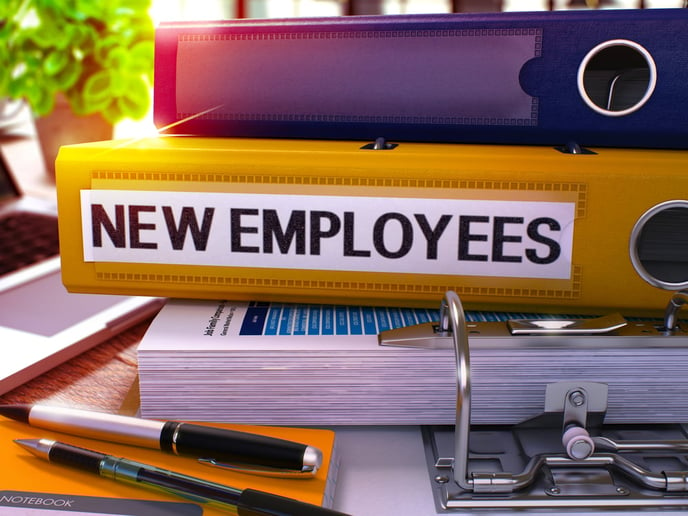Onboarding a new employee to Xero
Onboarding a new employee can be a complex process, depending on your organisation. The steps below will provide your bookkeeper with all of the details that are required to get them set up in the payroll system.
There are many other HR-related processes that may be required. We have included a basic HR checklist below, however, we strongly recommend that you set up your own onboarding checklist specific to your organisation's needs.
checklist below, however, we strongly recommend that you set up your own onboarding checklist specific to your organisation's needs.
1. Tax File Number Declaration form
You can download the ATO's most recent Tax File Number Declaration form from here.
This PDF form can either be completed online (preferred) or printed out.
Once the form has been completed and signed, it will need to be scanned and uploaded into the All Sorted onboarding Form (see Section 4 - below)
2. Super Choice Form
The Super Choice form is required for each new employee to ensure that their compulsory superannuation payments are paid to their nominated superannuation fund. You can access the ATO's most recent version here.
You will need to complete Section B prior to giving it to the new employee to complete.
Once the employee returns the form to you, you will need to complete Section C, scan the document and upload it into the All Sorted onboarding Form (see Section 4 - below)
3. Fair Work Information Statement
You are required to provide each new employee with a copy of the Fair Work Information Statement (FWIS). We recommend that as a part of your employment agreement you include an acknowledgement by the employee that they have received, read and understood the FWIS.
You can download a copy of the most recent version of the FWIS here.
The FWIS provides employees with a general overview of the National Employment Standards (NES) and conditions of employment. It contains information on:
- The National Employment Standards
- Right to request flexible working arrangements
- Modern awards
- Making agreements under the Fair Work Act 2009
- Individual flexibility arrangements
- Freedom of association and workplace rights (general protections)
- Termination of employment
- Right of entry
- The role of the Fair Work Ombudsman and the Fair Work Commission.
4. Payroll Onboarding Form
Once you have scanned the completed Tax File Number Declaration, Super Choice form and employment agreement complete this Payroll Onboarding Form. (You will require a Google account to complete the form - Click here for instructions to create one (if required)
The form will ask you to upload the following documents:
- Completed TFN Declaration Form
- Completed Super Choice form
- Completed Employment Agreement
- Scanned copy of driver's license (or other photo ID)
You will also be required to enter various personal details for the new employee. Please make sure you have the following information on hand before starting the form:
- Employee Name
- Date of Birth
- Phone
- Home Address
- Personal Email Address
- Bank account details (account name, BSB and Account number)
- Employment details
- Employment type (FT, PT, Casual, Contractor),
- Hours worked per week,
- Superannuation contribution,
- Start date,
- Salary,
- Relevant Award,
- Pay cycle (weekly, fortnightly, monthly)
- Leave entitlements
- Emergency Contact (name, relationship, phone, email)
4. Next Steps
Once submitted the system will notify your bookkeeper of the new staff member and you will receive a confirmation email confirming the details that have been entered.
Your bookkeeper will then:
- Add the employee to the payroll system
- Upload all documents to the payroll system
- Submit the TFN Declaration and Super Choice form to the ATO
- Send a Xero invitation to the new employee so they can make leave requests, check leave balances and monitor their pays
5. Other Non-payroll items
Depending on your organisation there may be a number of other non-payroll onboarding tasks that are required. These may include:
- Verify eligibility to work (work visa, age, etc.)
- Employment agreement signed and returned
- Provide employee with employee handbooks
- Review company policies (signed and returned). Examples include:
- Email use
- Internet use
- Social media use policy
- Alcohol use at company events
- Attendance
- Charitable donations
- Code of conduct
- Computer and network use
- Confidential information – classification/handling
- Conflict of interest
- Dress code
- Non-disclosure agreements
- IT Requirements
- System logons
- Computer/phone set up
- Desk allocation
- Company email address
- Software purchase/access
- Socialisation
- Announcement email
- Team introductions
- Inductions/Training
![All Sorted Logo - Rectangle - 2000 x 1000.jpg]](https://1012357.fs1.hubspotusercontent-ap1.net/hub/1012357/hubfs/All%20Sorted%20Logo%20-%20Rectangle%20-%202000%20x%201000.jpg?height=50&name=All%20Sorted%20Logo%20-%20Rectangle%20-%202000%20x%201000.jpg)